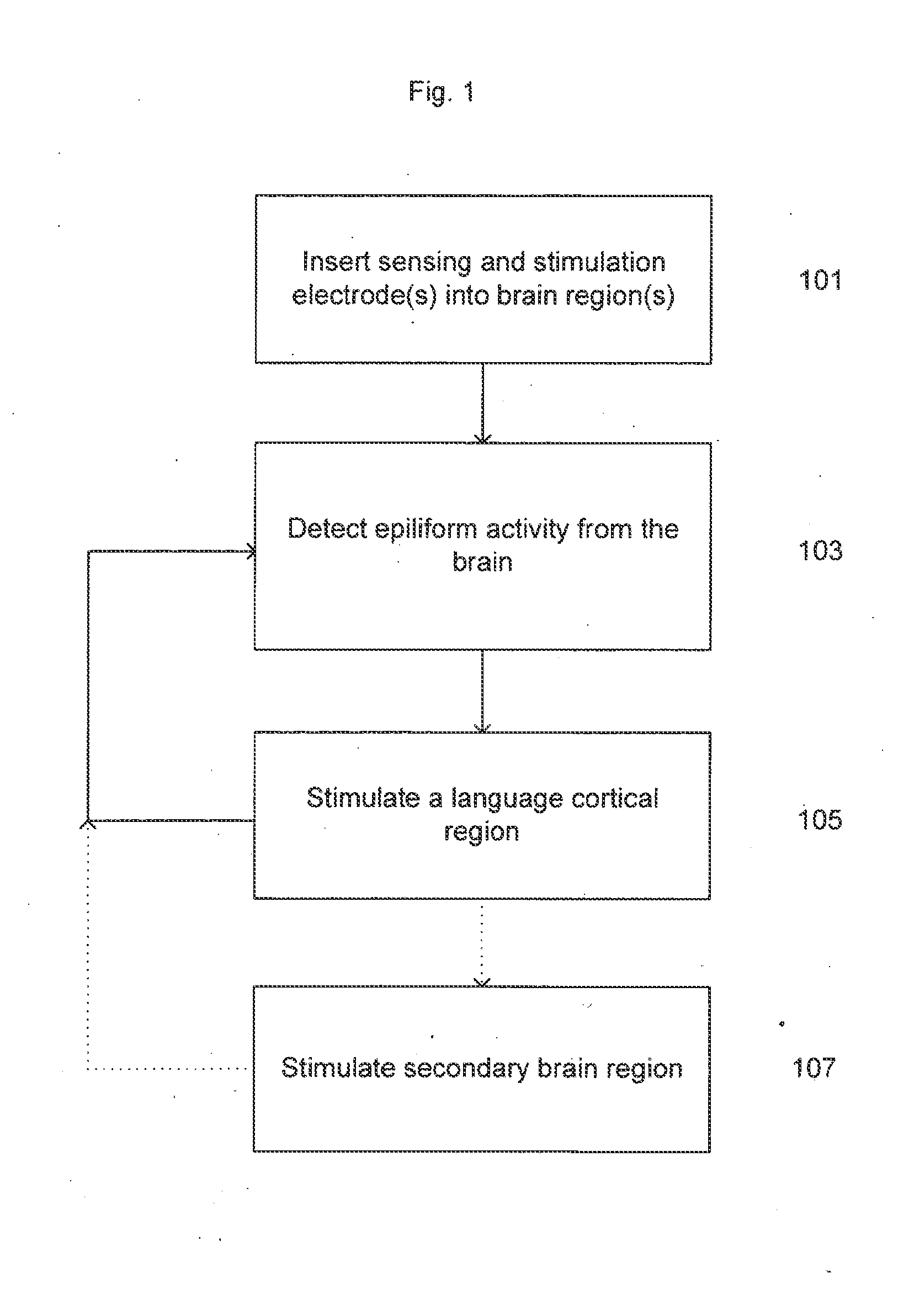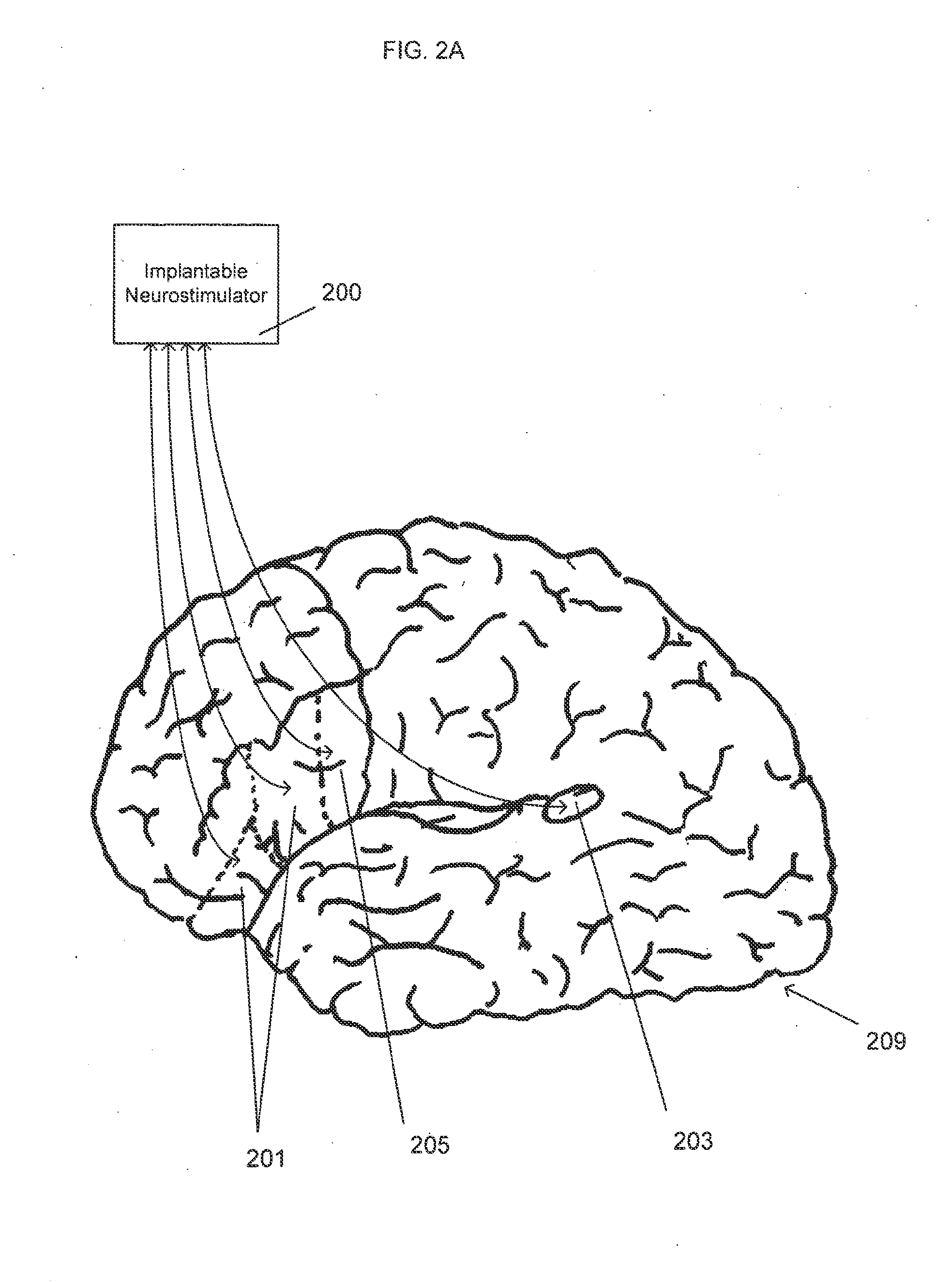Treatment of language, behavior and social disorders
a language, behavior and social disorder technology, applied in the field of language, behavior and social disorders, can solve the problems of no cure for autism spectrum disorders or acquired epileptic aphasia, changes in routine or familiar surroundings, and unrecognized, so as to improve social and emotional disabilities
- Summary
- Abstract
- Description
- Claims
- Application Information
AI Technical Summary
Benefits of technology
Problems solved by technology
Method used
Image
Examples
Embodiment Construction
[0034]Described here are methods of treating language, behavioral and social disorders. In particular, methods of treating language disorders related to autism spectrum disorders or acquired epileptic aphasias are described. As mentioned previously, many of the treatment methods provided herein may be used specifically to treat language disorders. Behavioral or social disorders may also be treated by the methods described herein. In some variations, the methods described herein may be used to treat a behavioral or social disorder, regardless of the presence of a language disorder. As used herein, language disorders may include language disorders related to autism spectrum disorders or acquired epileptic aphasias.
[0035]In general, a language, behavioral or social disorder may be treated by detecting epileptiform activity or an electrographic seizure from the brain 103, and applying neurostimulation to a primary or associative language cortical region 102 of the brain, as illustrated ...
PUM
 Login to View More
Login to View More Abstract
Description
Claims
Application Information
 Login to View More
Login to View More - R&D
- Intellectual Property
- Life Sciences
- Materials
- Tech Scout
- Unparalleled Data Quality
- Higher Quality Content
- 60% Fewer Hallucinations
Browse by: Latest US Patents, China's latest patents, Technical Efficacy Thesaurus, Application Domain, Technology Topic, Popular Technical Reports.
© 2025 PatSnap. All rights reserved.Legal|Privacy policy|Modern Slavery Act Transparency Statement|Sitemap|About US| Contact US: help@patsnap.com



